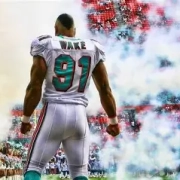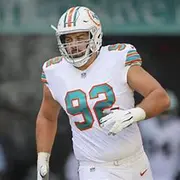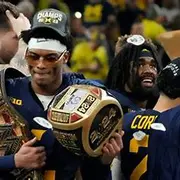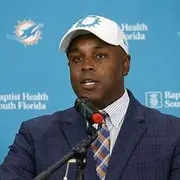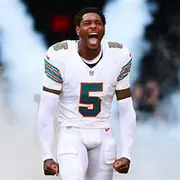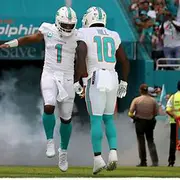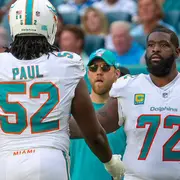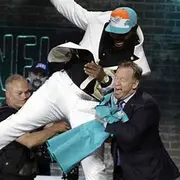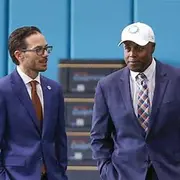Why Cameron Wake Belongs in the Dolphins’ Ring of Honor
Honoring Legends: Celebrating the Players Who Defined Dolphins Football
The Miami Dolphins have only retired three jersey numbers in franchise history—Bob Griese’s #12, Dan Marino’s #13, and Larry Csonka’s #39. Instead, the team has built its legacy through the Ring of Honor, an exclusive recognition bestowed upon those who have made lasting contributions to the franchise.
Though numbers like #54 (Zach Thomas) and #99 (Jason Taylor) have not been officially retired, they’ve been effectively taken out of circulation—a quiet but powerful nod to the immense impact those players had on the Dolphins’ identity, particularly on the defensive side of the ball.
With 23 players and just two coaches inducted, the Ring of Honor remains a high standard—one that’s not handed out lightly. But the time has come for another Dolphins defender to take his rightful place among these legends.
Another name that belongs in that exclusive circle of greatness is Cameron Wake.
His number remains in circulation, but his legacy is worthy of permanent recognition in the Dolphins’ Ring of Honor.
Humble Beginnings at Penn State
Long before Cameron Wake terrorized quarterbacks on Sundays, he was just an overlooked college prospect trying to find his place at Penn State. Recruited as a linebacker, Wake—then known as Derek Wake—showed flashes of potential, but never quite found his breakout moment in college. He registered modest stats and signed as an undrafted free agent in 2005 before getting cut by the Giants. A disappointment that might’ve ended the story for most players.
But not for Cam.
A Star is Born in the CFL
After a brief and uneventful stint with the New York Giants, Wake found himself out of football and working odd jobs to stay afloat. Refusing to give up on his dream, Wake reinvented himself in the Canadian Football League, signing with the BC Lions in 2007. It was there he fully transformed—not just into a professional athlete, but into a force of nature.
Wake dominated the CFL like few ever had. In his rookie year, he led the league in sacks and earned CFL Most Outstanding Rookie. He followed that up with back-to-back Most Outstanding Defensive Player awards in 2007 and 2008. He wasn’t just good—he was undeniable.
CFL statistics
| Year | Team | Games | Tackles | Interceptions | Fumbles | ||||||||||
|---|---|---|---|---|---|---|---|---|---|---|---|---|---|---|---|
| GP | GS | Cmb | Sck | PD | Int | Yds | Avg | Lng | TD | FF | FR | Yds | TD | ||
| 2007 | BC | 18 | 18 | 72 | 16.0 | 0 | 0 | 0 | 0.0 | 0 | 0 | 3 | 0 | 0 | 0 |
| 2008 | BC | 18 | 18 | 65 | 23.0 | 0 | 0 | 0 | 0.0 | 0 | 0 | 5 | 3 | 45 | 1 |
| Total | 36 | 36 | 137 | 39.0 | 0 | 0 | 0 | 0.0 | 0 | 0 | 8 | 3 | 45 | 1 | |
He used his time in Canada to sharpen his craft, build his body, and prepare for a second shot at the NFL.
The Dolphins Take a Chance
In 2009, the Miami Dolphins bet on a CFL breakout star others had ignored—and it paid off in a big way.
Wake exploded onto the scene with his relentless motor, explosive first step, and ability to bend around tackles like a heat-seeking missile. He quickly evolved into one of the NFL’s elite pass rushers, compiling 98 sacks over 10 seasons in Miami, the second-most in franchise history, trailing only Hall of Famer Jason Taylor.
Wake didn’t just get stats—he made statements. His 4.5-sack game against the Cardinals in 2012 remains one of the most dominant single-game defensive performances in team history. And his Halloween walk-off safety in overtime against the Bengals in 2013? That’s not just a highlight—it’s part of Dolphins lore.
Here’s a closer look at just how consistently productive he was:
| Year | Games | Sacks | Tackles (Total/Solo) | FF | FR | INT |
|---|---|---|---|---|---|---|
| 2009 | 14 | 5.5 | 23 / 19 | 1 | 0 | 0 |
| 2010 | 16 | 14.0 | 57 / 48 | 3 | 0 | 0 |
| 2011 | 16 | 8.5 | 42 / 37 | 0 | 0 | 0 |
| 2012 | 16 | 15.0 | 53 / 38 | 3 | 0 | 0 |
| 2013 | 15 | 8.5 | 42 / 37 | 2 | 1 | 0 |
| 2014 | 16 | 11.5 | 38 / 32 | 3 | 1 | 0 |
| 2015 | 7 | 7.0 | 9 / 7 | 4 | 0 | 0 |
| 2016 | 16 | 11.5 | 29 / 22 | 5 | 0 | 1 |
| 2017 | 16 | 10.5 | 36 / 28 | 0 | 0 | 0 |
| 2018 | 14 | 6.0 | 36 / 21 | 1 | 0 | 0 |
| 2019 | 9 (TEN) | 2.5 | 4 / 3 | 1 | 0 | 0 |
Career totals:
-
100.5 sacks
-
364 total tackles (282 solo)
-
22 forced fumbles
-
2 fumble recoveries
-
16 pass deflections
-
1 interception
-
- NFL Awards
- First-team All-Pro (2012)
- 3× Second-team All-Pro (2010, 2014, 2016)
- 5× Pro Bowl (2010, 2012–2014, 2016)
Wake’s 100th sack came as a member of the Tennessee Titans, and just like many of his sacks, it was quite memorable.
Cameron Wake’s 100th Career Sack
A Leader, a Warrior, a Legend
More than just numbers, Wake was a moment-maker—a guy who delivered in clutch situations and brought the same intensity to every snap, even when the team around him faltered. He was a consistent spark during some of the Dolphins’ darkest years, never coasting, never complaining, always competing.
Even in his later years, battling injuries and age, Wake remained productive and dangerous. He earned five Pro Bowl selections (2010, 2012–2014, 2016), was named First-Team All-Pro in 2012, and earned Second-Team All-Pro honors three times. That’s elite company—among pass rushers of his era, few matched his blend of longevity, leadership, and big-play ability.
More Than Just a Player
What made Wake special wasn’t just what he did on the field. It was who he was off it.
He led by example in the locker room, mentored young players, and set the tone during training camps and Sunday warmups. He was also active in the Miami community, contributing to numerous charitable causes and youth organizations. His legacy isn’t just in sacks or highlight reels—it’s in lives impacted.
As a young fan, I remember mimicking his sack celebration in my living room after every big play. He wasn’t just a favorite—he was a hero. One memory that still sticks with me is his and Ndamukong Suh’s sack on Bryce Petty. I wanted that 100th sack for him in a Dolphins uniform so badly. But whether he finished at 98 or 108, the impact is the same.
A Fitting Place Among the Greats
Cameron Wake’s story transcends stats and accolades. He embodies everything the Miami Dolphins claim to stand for—resilience, excellence, leadership, and heart.
He overcame every obstacle: undrafted, released, doubted, and overlooked. And in doing so, he became not only one of the best pass rushers in franchise history, but also one of its most inspiring figures.
Adding Wake to the Dolphins’ Ring of Honor isn’t just symbolic—it’s a long-overdue acknowledgment of his greatness.
He wore aqua and orange with pride and was a beacon of consistency throughout the 2010s.
The only injustice done to Cam was the team’s inability to surround him with a true contender. Week in and week out, Wake gave everything he had—emerging as one of the greatest defensive ends not just in Dolphins history, but in NFL history.
Now, it’s time for the Dolphins to return the favor—and give him the permanent recognition he so clearly deserves.
Put 91 in the Ring.
